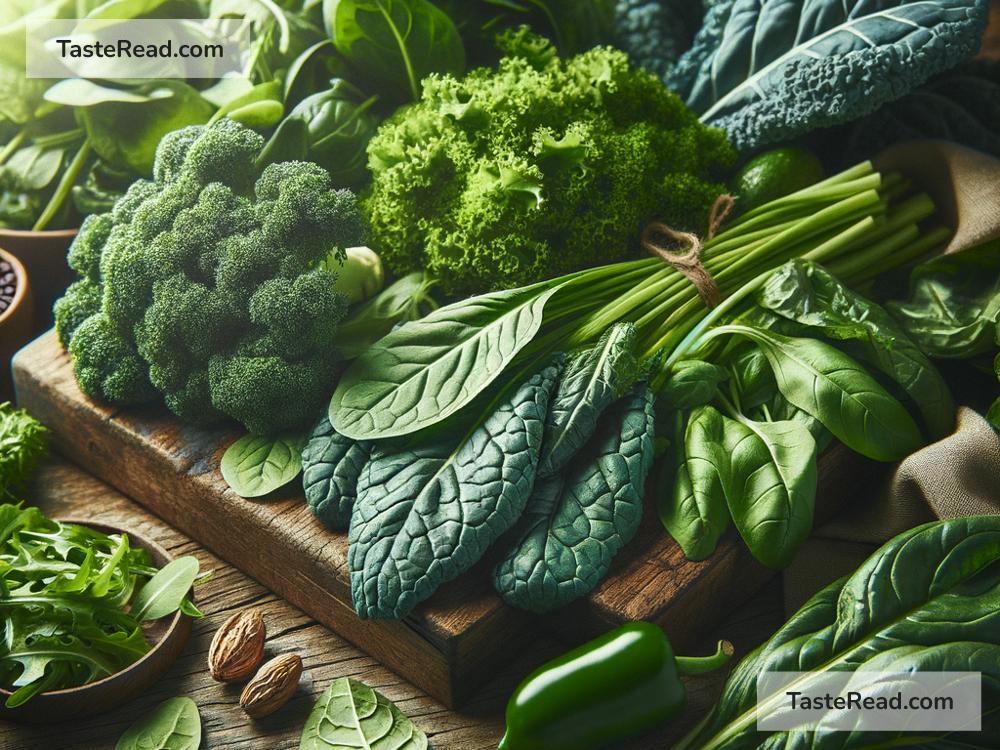How Bitterness is Perceived in Leafy Greens
Leafy greens are an important part of a healthy diet. They’re packed with essential nutrients, vitamins, and fiber that help keep our bodies strong. From spinach to kale to arugula, these greens have earned their spot on our plates. However, there’s one major characteristic that often makes people hesitant to eat them: bitterness. In this article, we’ll explore why leafy greens taste bitter, how our bodies perceive this bitterness, and tips on enjoying these nutrient-rich vegetables.
Why Do Leafy Greens Taste Bitter?
Bitterness in leafy greens comes from natural compounds called “phytochemicals.” These are chemicals produced by plants to protect themselves from pests, disease, and environmental stress. One common type of phytochemical responsible for bitterness is “glucosinolates.” They’re found in greens like kale, mustard greens, and collard greens. Another group called “phenolic compounds” can also add to the bitter flavor.
Although bitterness might seem like a negative trait, it serves a purpose for the plant. It acts as a defense mechanism. Bitter-tasting plants are less likely to be eaten by herbivores (animals that eat plants). For humans, however, bitterness can be both a benefit and a challenge.
How Does the Human Body Detect Bitterness?
Our ability to detect bitterness comes from taste buds located on the tongue. These taste buds contain special cells that connect to taste receptors. When you eat something bitter, certain molecules in the food interact with these receptors, sending signals to your brain. The brain then interprets the bitterness as part of the food’s flavor.
Interestingly, humans are wired to be sensitive to bitter tastes because, in nature, many poisonous substances are bitter. This sensitivity helped our ancestors avoid harmful plants and survive. However, not all bitter foods are bad for you. Leafy greens contain beneficial compounds that support health.
Why Do Some People Dislike Bitter Greens?
Not everyone perceives bitterness the same way. For example, studies show that genetics play a role in how we taste food. Some people have a special version of a gene called “TAS2R38,” which makes them extra sensitive to bitterness. For these individuals, bitter greens may taste especially intense or unpleasant.
On top of genetics, personal experience influences how we react to bitter flavors. If someone didn’t grow up eating leafy greens, they might find the bitterness unfamiliar and less appealing. On the other hand, people who regularly eat greens tend to build a tolerance for bitterness. Over time, they may even come to enjoy the flavor.
The Health Benefits of Bitterness
It’s important to note that the compounds that make leafy greens bitter also make them incredibly healthy. For example, glucosinolates found in greens like kale and mustard greens have antioxidant properties. They help protect your cells from damage and may lower your risk of certain diseases.
Phenolic compounds, another group of bitter substances, have anti-inflammatory and heart-protective benefits. As a result, eating bitter greens regularly can improve your overall health and longevity.
Additionally, the fiber in leafy greens supports digestion and helps you feel full. Many greens are low in calories but rich in nutrients like Vitamin K, Vitamin C, and iron, making them a smart choice for anyone looking to eat healthily.
How to Make Bitter Greens Taste Better
For those who dislike bitterness, there’s good news: you can minimize the bitter flavor of leafy greens with some simple tips. Below are a few ideas to help you enjoy greens in your meals:
-
Pair with Sweet or Acidic Ingredients: Sweet flavors (like fruits such as apples or berries) and acidic flavors (like citrus juice or vinegar) balance out bitterness. For example, create a kale salad with apples, lemon juice, and a light dressing for a blend of complementary tastes.
-
Cook the Greens: Cooking leafy greens reduces their bitterness by breaking down some of the bitter compounds. Sautéing spinach, steaming collard greens, or roasting kale can create a softer, milder taste.
-
Add Healthy Fats: Fats can help coat the tongue and lessen bitter notes. Use olive oil, avocado, or nuts to make your greens taste smoother.
-
Mix with Other Ingredients: Combine bitter greens with other flavorful ingredients in a dish. For example, you can use arugula in a mixed salad with romaine lettuce or sauté spinach with garlic and onions.
-
Start Small: If you’re new to eating greens, start with the least bitter varieties, like spinach or Swiss chard. Gradually introduce more bitter options like kale or mustard greens over time.
Final Thoughts
Bitterness in leafy greens may seem like a minor hurdle, but understanding it can help you appreciate these healthy vegetables more. Whether you enjoy the sharp bite of arugula or prefer the mild taste of spinach, leafy greens have much to offer. By experimenting with cooking methods and flavor pairings, you can find ways to make greens a delicious and regular part of your diet.
So, don’t shy away from leafy greens just because of their bitterness. Embrace their bold flavors and nourish your body with the amazing nutrients they provide. You may find that over time, your taste buds come to love these powerful and healthy vegetables!


